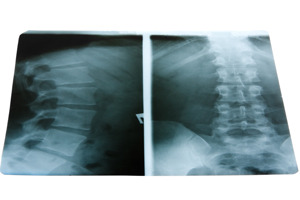Patients occasionally ask whether chiropractic x-rays are safe, so we wanted to  summarize the current FDA statements on x-ray safety and give you a couple credible resources where you can learn more. Read the full article if you want the complete story, but if you are looking for a quick answer, the FDA estimates that the radiation exposure from a chest ray is roughly equivalent to the background radiation you are exposed to in 10 ordinary days on planet Earth.
summarize the current FDA statements on x-ray safety and give you a couple credible resources where you can learn more. Read the full article if you want the complete story, but if you are looking for a quick answer, the FDA estimates that the radiation exposure from a chest ray is roughly equivalent to the background radiation you are exposed to in 10 ordinary days on planet Earth.
 summarize the current FDA statements on x-ray safety and give you a couple credible resources where you can learn more. Read the full article if you want the complete story, but if you are looking for a quick answer, the FDA estimates that the radiation exposure from a chest ray is roughly equivalent to the background radiation you are exposed to in 10 ordinary days on planet Earth.
summarize the current FDA statements on x-ray safety and give you a couple credible resources where you can learn more. Read the full article if you want the complete story, but if you are looking for a quick answer, the FDA estimates that the radiation exposure from a chest ray is roughly equivalent to the background radiation you are exposed to in 10 ordinary days on planet Earth.
The FDA states on its website "Don't refuse an X-ray. The risk of not having a needed X-ray is greater than the small risk of radiation."
First of all, there is no difference between a chiropractic x-ray and any other type of x-ray. While x-ray equipment does vary slightly by manufacturer, what really matters is the body part being imaged. Different body tissues absorb radiation in different ways.
To provide consumers with a way of monitoring radiation exposure across multiple sources, the FDA uses an effective dosage scale. Each type of x-ray has an effective dosage associated with it measured in millisieverts (mSv). Since millisieverts isn't a unit of measure most people are familiar with (like a mile or a teaspoon), having a reference value helps put the numbers in context. The FDA estimates that the average person is exposed to 3.0 millisieverts of radiation per year from naturally occurring radioactive materials and cosmic rays. That's what allows them to state that a 0.1 millisievert dosage from a chest x-ray is equivalent to about 10 days of background radiation exposure.
Compared to a chest x-ray, x-rays of the extremities (arms and legs) have a much lower effective dosage and x-rays of the lower torso have a higher effective dosage. Recall that the effective dosage comes mainly from the body part being imaged not the intensity or duration of the x-ray machine pulse. Here's a summary of effective dosages and background radiation equivalents for the various types of x-rays a chiropractor is likely to recommend:
· Extremities - 0.001 mSv – similar to 3 hours background radiation
· Chest - 0.1 mSv - similar to 10 days background radiation
· Spine - 1.5 mSv - similar to 6 months background radiation
The FDA website and the excellent radiologyinfo.org website from the American College of Radiology and the Radiological Society of North America both point out that disease risks from radiation exposure are cumulative across time and that patients play a critical role in tracking their own exposure levels. Since you may be working with multiple health care providers in different specialty areas, you should keep a log of your exposures. Here is a link to a site where you can download a personal Patient Medical Imaging Record: http://imagewisely.org/Patients.aspx
Note that this article refers to effective exposures and recommendations for adults. If you are pregnant or looking for x-ray safety information for children, visit imagegently.org
Author Bio:
Dr. Matt Ramirez graduated with a degree in Bachelor of Human Biology in 2004 and received his Doctor of Chiropractic Degree in 2006. He specializes in auto injury recovery and rehabilitation and has enhanced and improved thousands of lives as well as treated people of all ages over the years. He is also an expert in health and wellness, massage therapy, chiropractic care, and more...

No comments:
Post a Comment